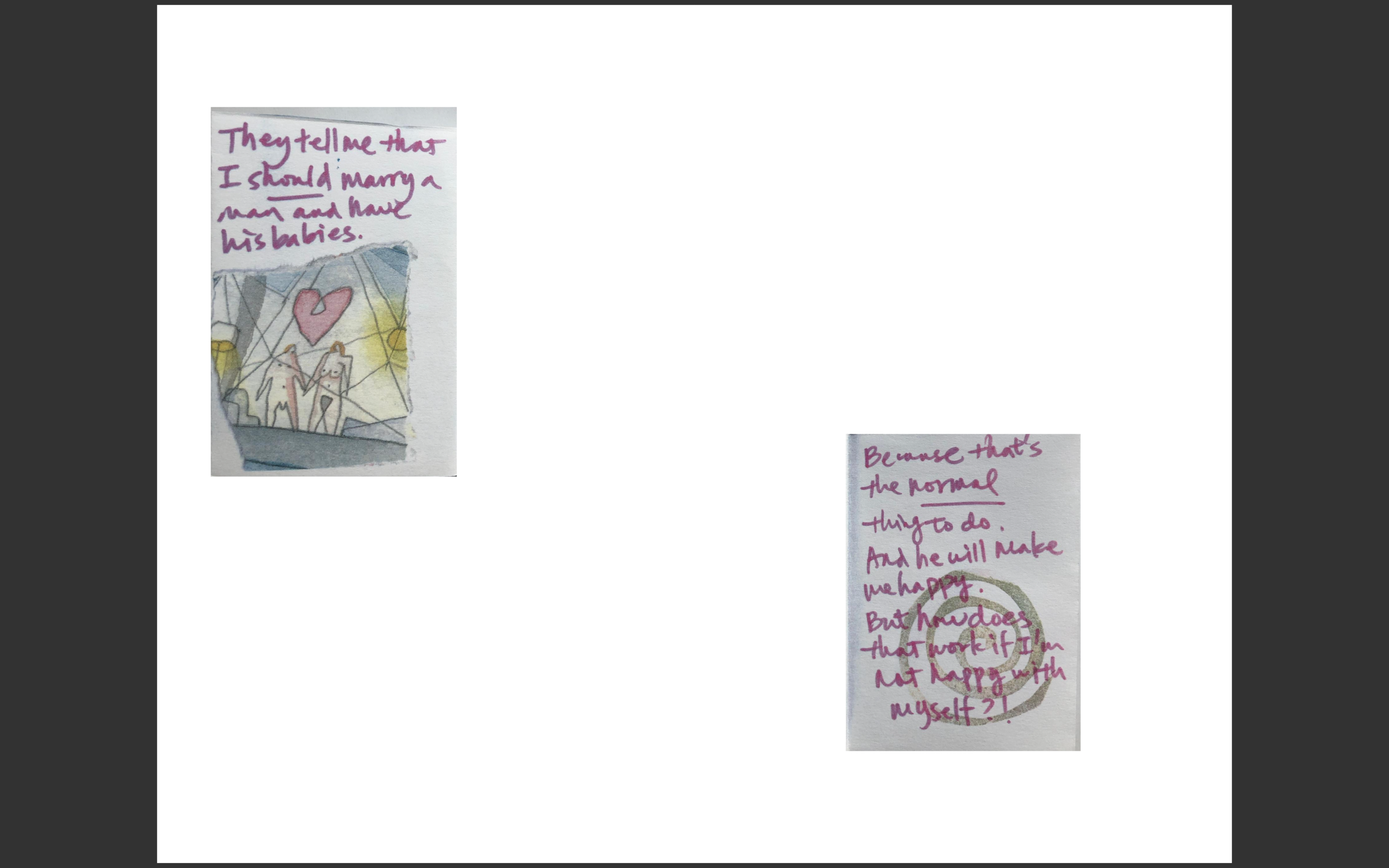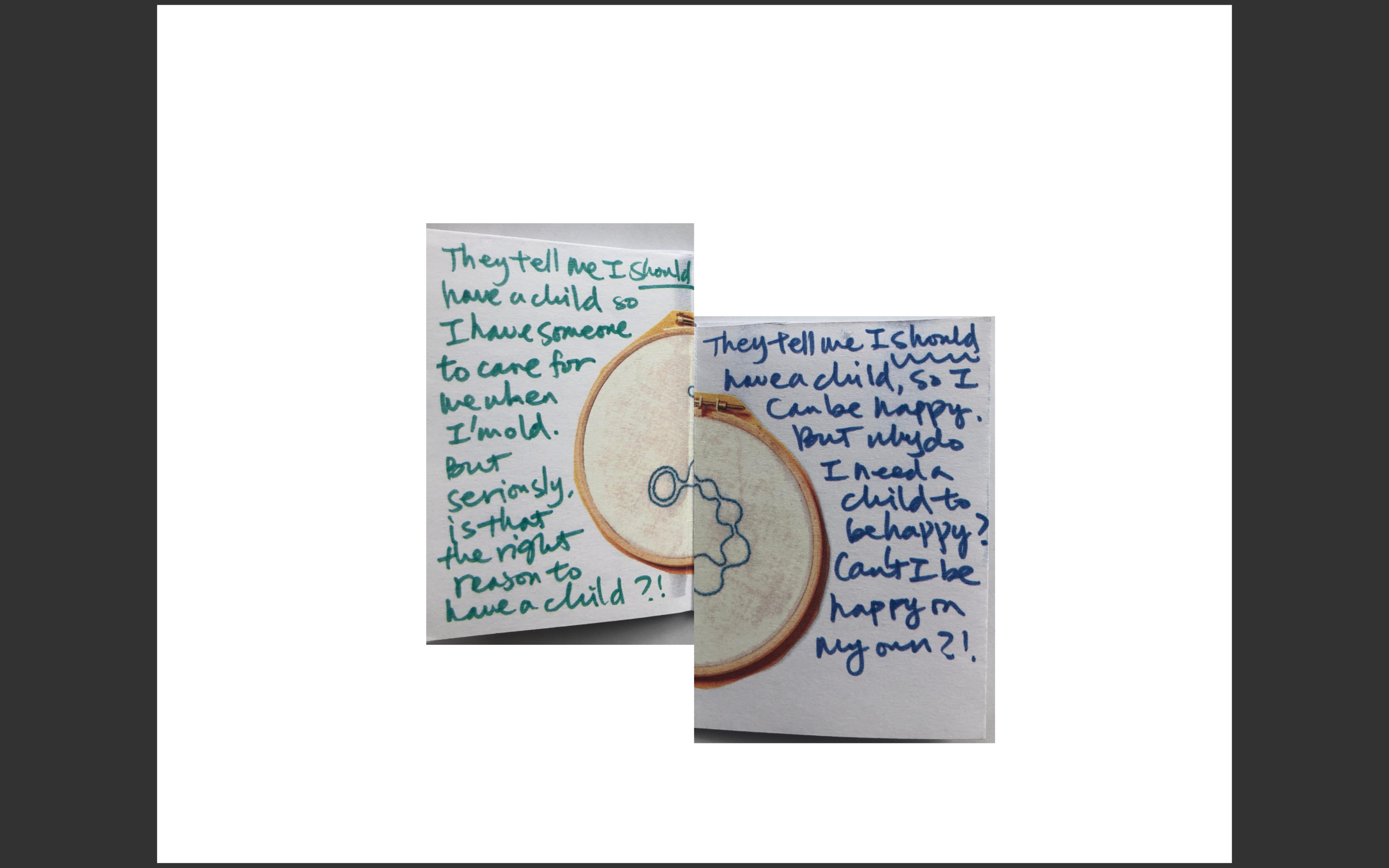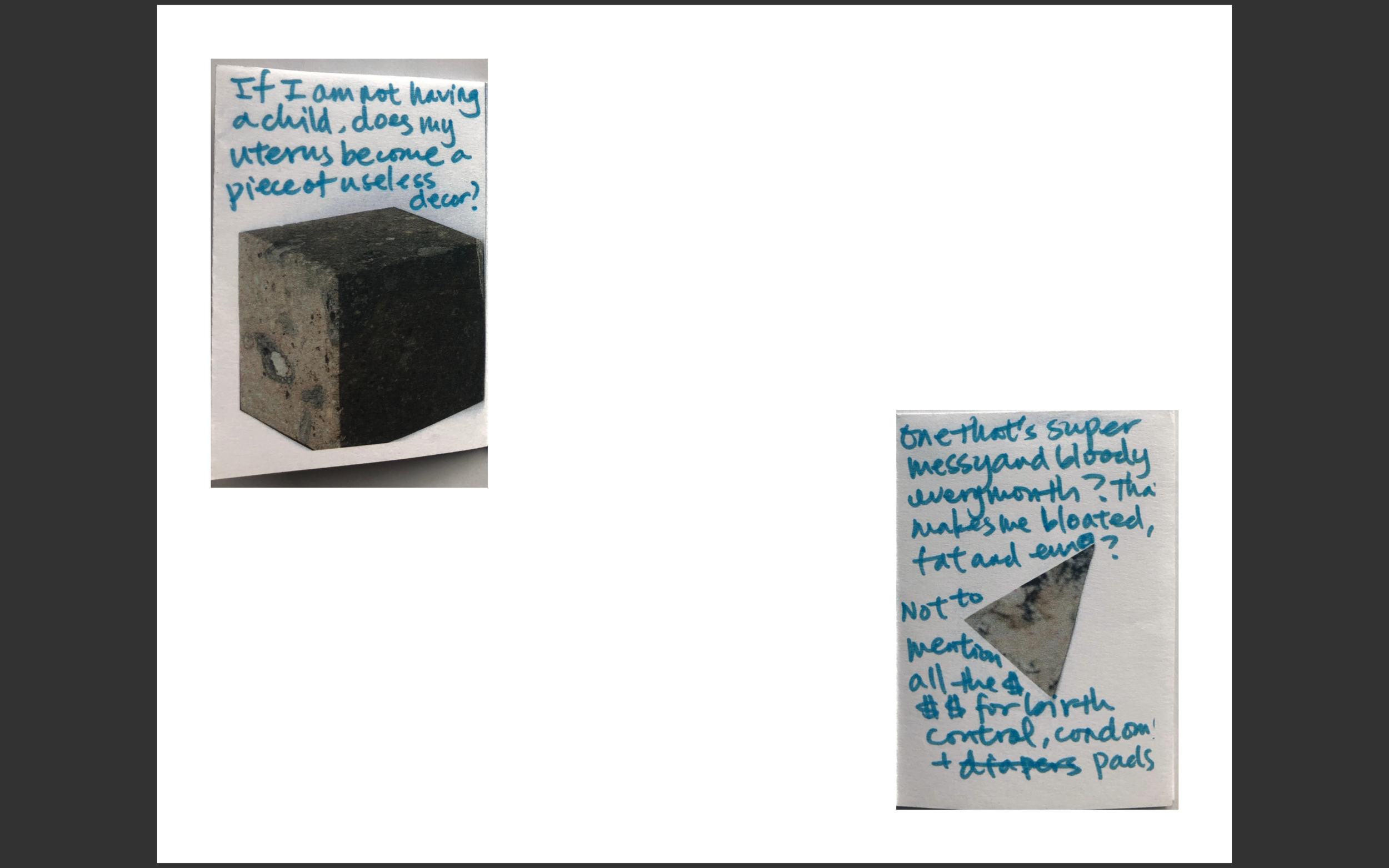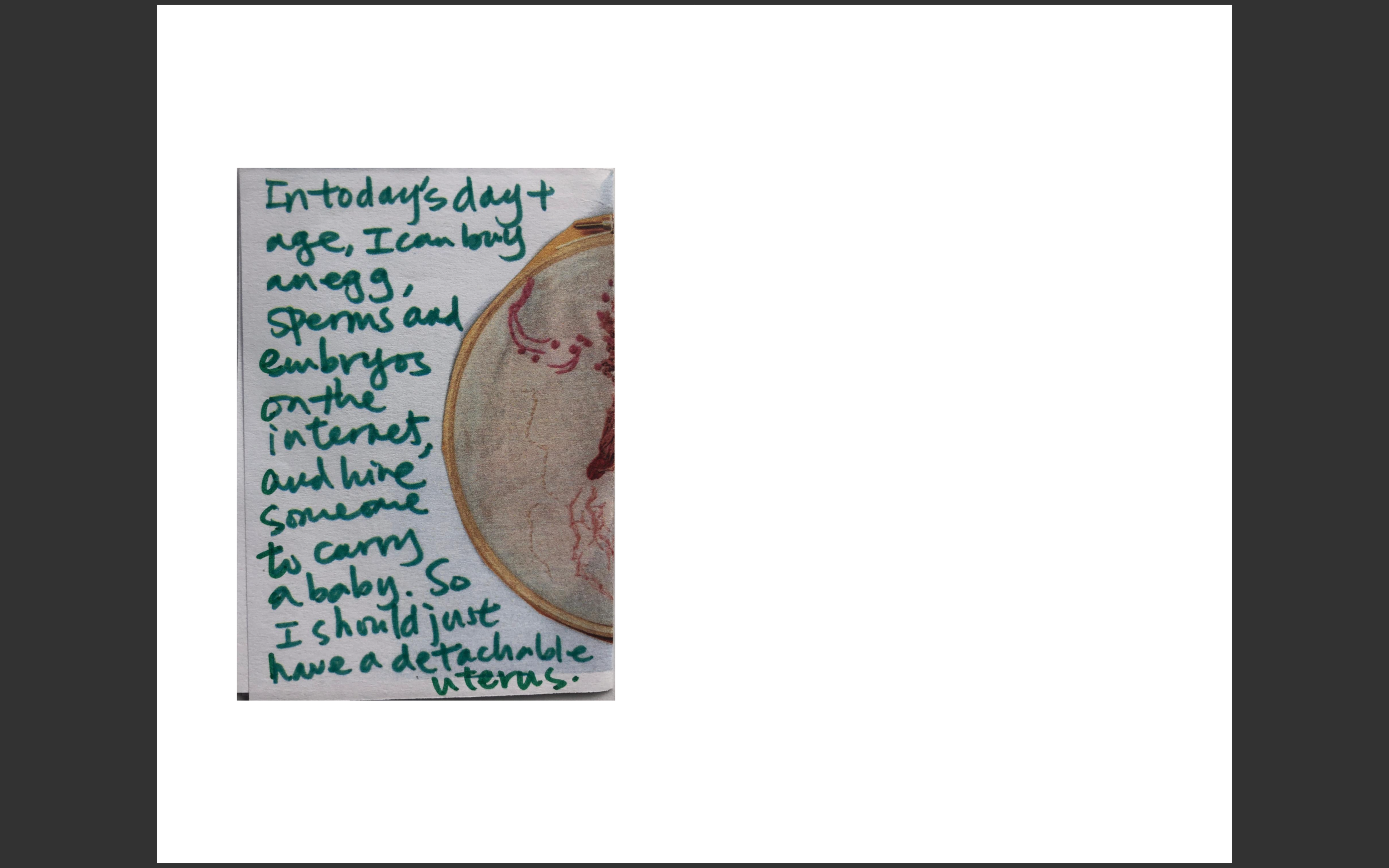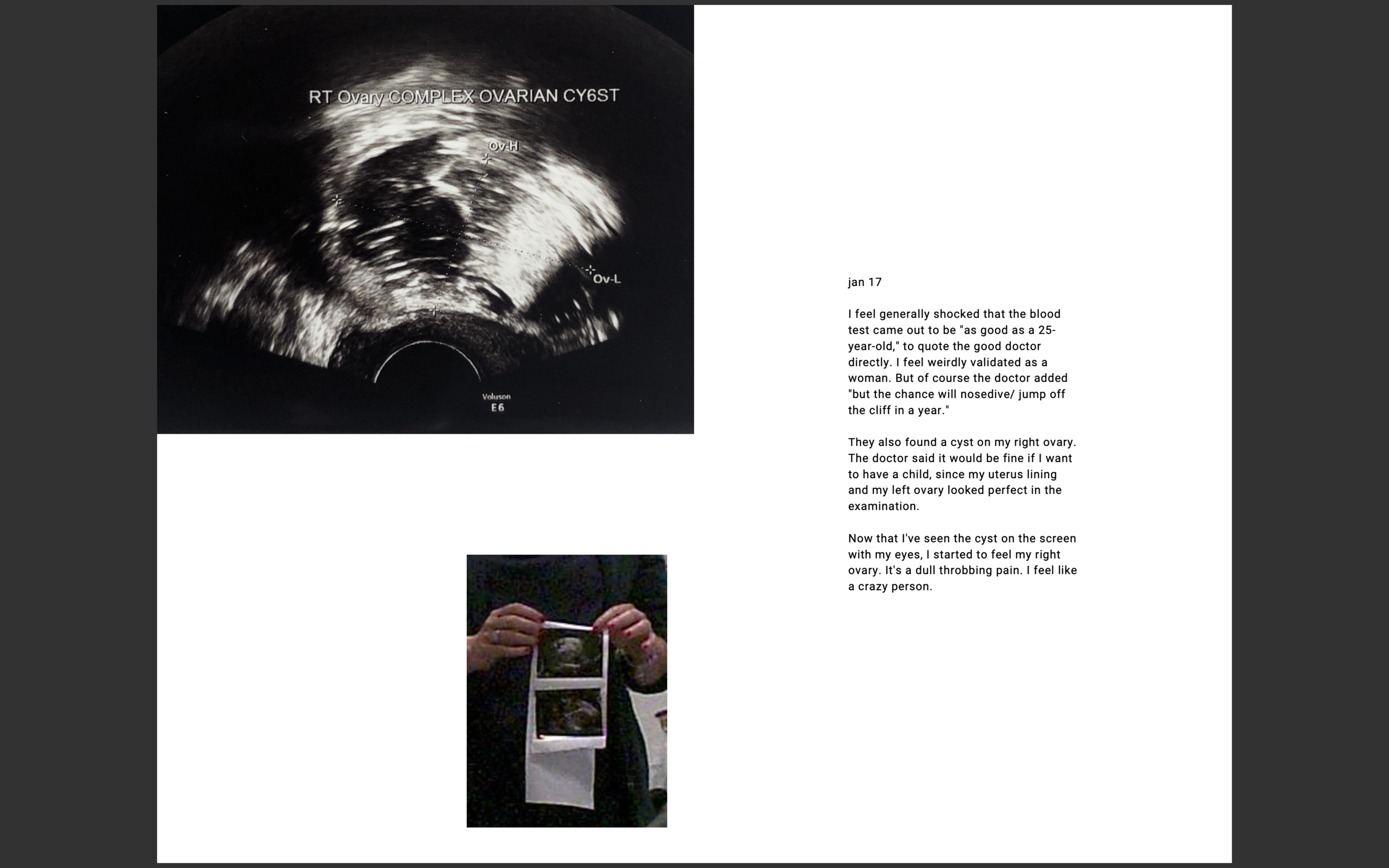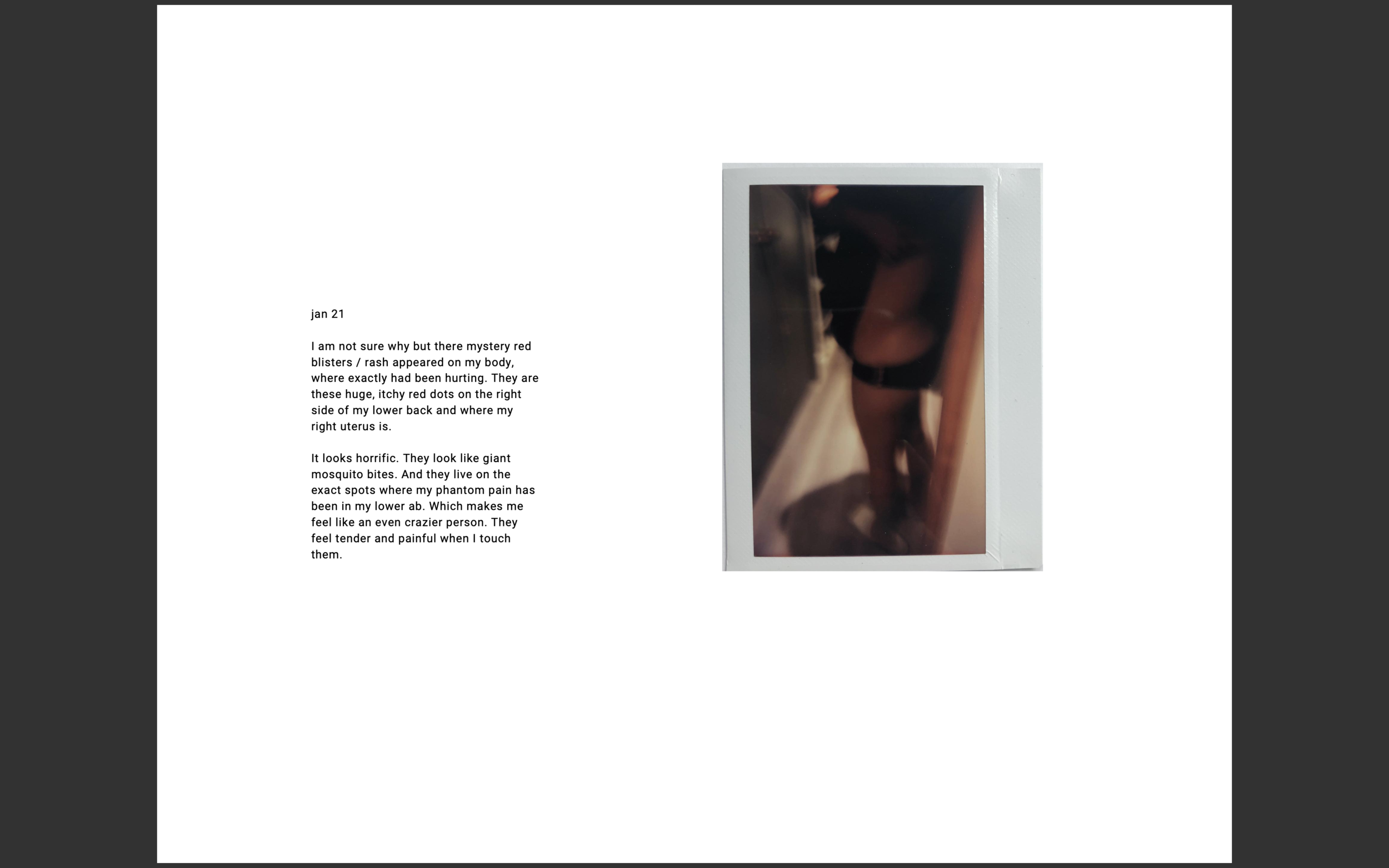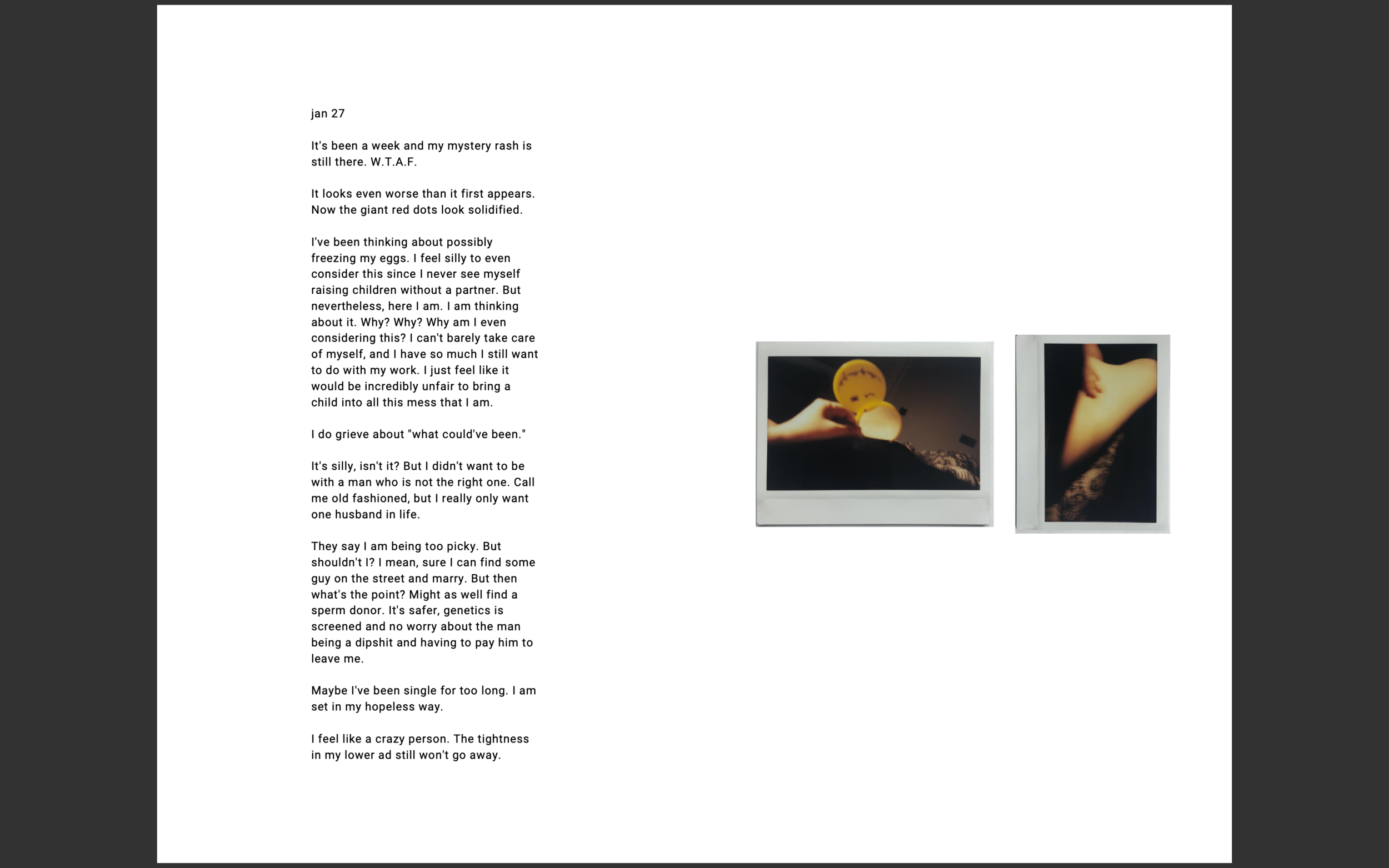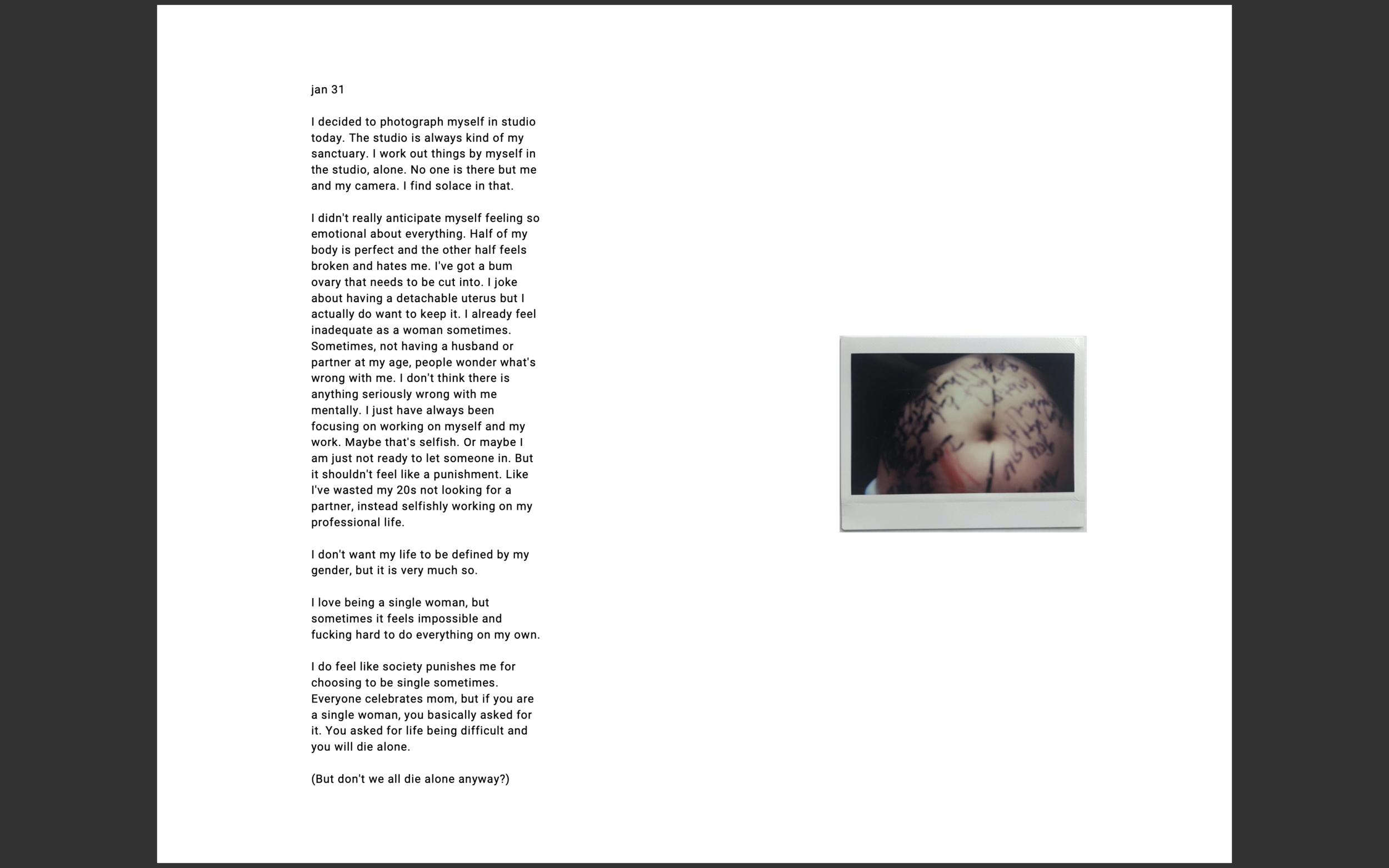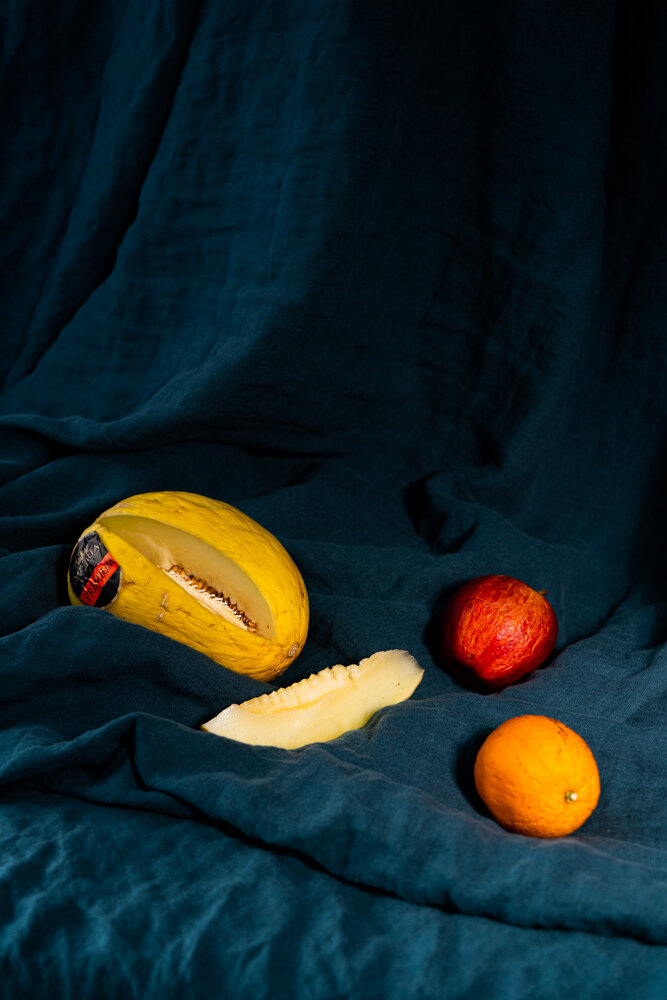Modern Fertility
Modern Fertility is a 3-part project that examines modern fertility practices and the social and emotional tolls on our society and women who participate in them.
Part 1: Book: I’ve Got a Bum Ovary
In this part of the project, I documented my own experiences of possibly going through fertility treatments. During which, I found out that I have a 5cm cyst sitting on my right ovary, which can kill the ovary itself if left unoperated. I gathered pieces of reflections -- personal journal entries, pages from a zine, instant film, video still, medical documents and screenshots of text conversations into a photo book.
Here are some selected pages:
Part II: Still Life Series
This still life series touches on various modern fertility issues made possible by the advancement of technology, specifically surrounding the commerce of human genetic materials for the purpose of conceive children.
(1) depicts the possibilities modern women have to purchase and select other women’s eggs to implant into her own womb for the purpose of creating a child. The eggs are generally sourced from young, healthy women who needed to sell their eggs for income. In certain parts of the world, black market operators illegally harvest young women’s eggs and sell them for extremely high profits.
(2) reflects the concept of “leftover women.” This is a concept originated from China where unmarried women as young as 25-year-old are considered as unmarriable, because she had already past her prime childbearing years. With the advancement of fertility science, women in their 40s are now giving birth to healthy babies. Despite this, women who are past their conventional prime for bearing children are often shut out of the marriage and dating market.
(3) illustrates the lack of regulation and ethical practice in selling sperms online. Selling sperms online is largely controlled by sperm banks in California and Denmark. In the US, for example, there is no regulation to restrict how many families a man can donate his sperm to. There is also monetary value in donating sperms in the States. A man can donate up to three times per week at one clinic, for the price of $75-$100+, depending on his demographics. Because there is no communication between each clinic, a healthy sperm donor can essentially go to every clinic in town and make 6-figure income a year just on sperm donations.
Part III: My Future Unborn Child
I met with numerous salespeople from fertility facilities and donor sperms banks during the research process of this project. Everyone told me how easy it is to shop for sperms online, it is as easy as going on Amazon.com. So I took sperm donor photos from the internet and imagined what our children could look like. I pulled text from the descriptions of their donors' profiles to accompany the composite photos, based on what I feel would be the most attractive trait by my parents' standards.

